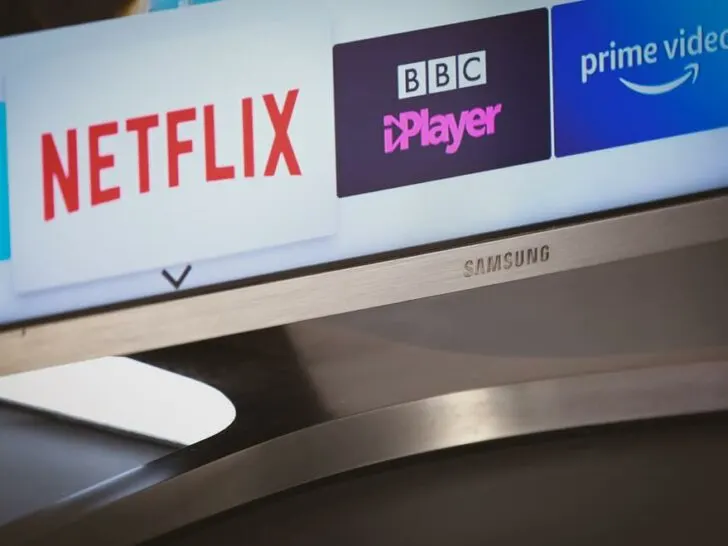Quick Answer: The flickering screen on your Samsung TV can be due to overheating, problems with the wiring, and picture settings.
In this article, I will talk about the possible causes of why the screen on your Samsung TV is flickering. Also, I’ll help you with some simple troubleshooting to resolve the flickering screen. So, keep reading for the nitty gritty details!
So, let’s find out!
By continuing to use this website you agree to our Terms of Use. If you don't agree to our Terms, you are not allowed to continue using this website.
Why is my Samsung TV suddenly flickering?
Buggy software and hardware issues are the top reasons why your Samsung TV is flickering.
It’s hard to tell how this happens but this kind of glitch is uncommon in most TVs. In most cases, the quickest fix is to restart, power cycle, or reset your Samsung TV.
These are other possible reasons the screen of your Samsung TV is flickering:
- faulty HDMI connection
- problems with the input device
- light sensor blocked
- Ambient Light Detection activated
- glitch on the Ambient Light Detection feature
Samsung TV Flickering Screen Fixes
Here are some the tricks that may help resolve the flickering screen on your Samsung TV
- Turn off energy-saving mode.
- Turn off the Ambient Light Detection feature.
- Adjust the minimum backlight.
- Make sure the cable connections are secured and the cables are in good condition. Damaged cables should be replaced.
- Check the input source.
- Turn off the Contrast Enhancer feature.
- Activate the Digital Clean View function.
- Turn off brightness optimization and Brightness Reduction.
- Turn off Motion Lighting.
- Turn off Intelligent Mode.
- Turn off Auto-Motion Plus or Picture Clarity.
- Check internet connectivity.
- Change the TV picture setting.
- Unplug the TV from the power source.
- Update the TV firmware.
- Restart the TV.
- Replace the display panel of the TV.
- Get in touch with Samsung Support.
How much does it cost to fix a flickering TV?
The cost of fixing up a flickering TV screen depends on the severity of the damage.
On average, it would cost you about $60 to $350 to fix a TV.
These are other cost roughly estimated:
- replacing the motherboard or power supply at $250
- bub replacement for $90
- fixing HDMI port for $200
- backlight repair for $110
- labor charge of $60 to $125 per hour
These are just estimated costs. What you might find will be entirely different – more or less expensive. And if repair is going to cost more, I’d say getting a new Samsung TV is more practical.
FAQs
How do I reset my Samsung TV if it won’t turn on?
Go to the “Menu” of your Samsung TV to reset it. Select Settings>Support>Self-Diagnose>Reset, then input the PIN, which should be ‘0000’ by default, and press “Enter.” Rebooting the TV will hopefully resolve any issues.
How do I get my Samsung TV out of standby mode?
You may accomplish this by going to “Eco Solutions Options” in the system menu of your TV and disabling “No Signal Power Off,” which turns off your TV when there isn’t an input signal for a certain period of time. Additionally, you could check the system menu to verify if “Auto-Protection Time” is switched on or off.
How often should you replace your TV?
Studies show that you should get your TV replaced after no more than 10 years of use. The average TV today lasts for 7-10 years with proper care and maintenance. However, it is undeniable that with age and time, it will be harder for owners to get new parts or replacements for older TV models. Plus, regularly replacing your TVs can save you more money in the long run and will get you newer features.
How do I know if my TV needs replacing?
The common signs that your TV needs replacing are when the screen is fuzzy or there is poor sound quality. Visual quality is usually the first to go when it comes to older TV models. So when you find that your TV is retaining image, or there is some pixelation, then that could be a sign that your it needs to be replaced with a newer model.
Conclusion
- Your TV’s brightness is automatically changed in Energy Saving Mode to lower the amount of electricity it uses. Because of this feature, the screen may occasionally flicker.
- If turning off Energy Saving Mode (or Ambient Light Detection) doesn’t solve the problem, try the “Minimum Backlight” setting on your Samsung TV. This feature allows you to change the brightness of the light that illuminates your screen, and you might occasionally need to move this dial to stop your TV from flickering.
- You can restore the factory default settings by performing a picture settings reset on your Samsung TV.
- It’s time for a full factory reset if updating the OS doesn’t fix your flickering issues.
- It may be more practical to replace the TV if repair is going to be costly.
Other Articles
- How to Change Wi-Fi on Ring Doorbell (Here’s What You Need to Do!)
- Is a Samsung TV Better Than an Insignia TV?
- How to Fix Amazon Fire TV Stick Losing Connection (10 Ways to Do It)
Click here to view the Visual Story Version of this Article.

